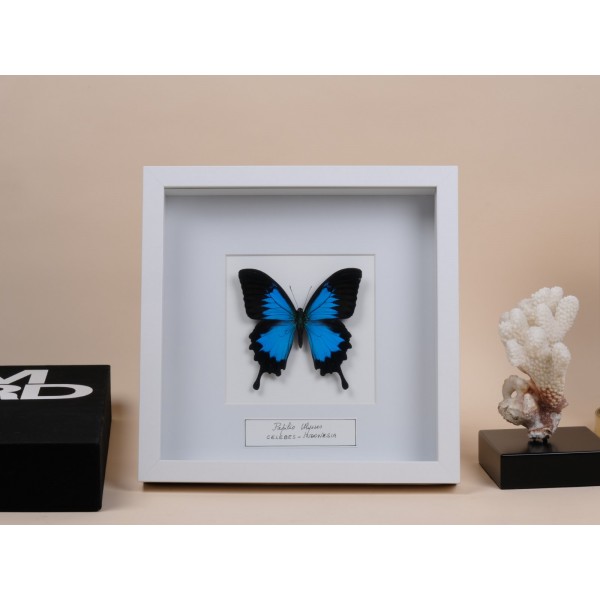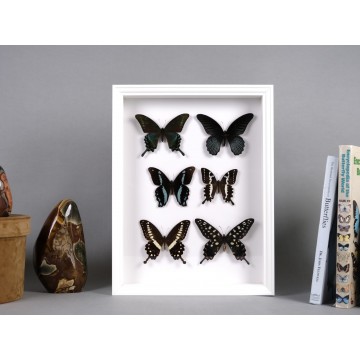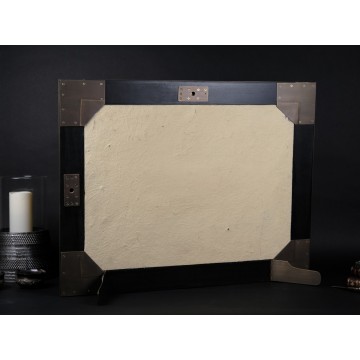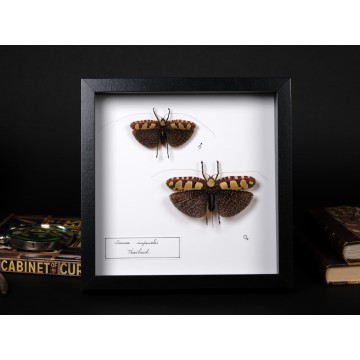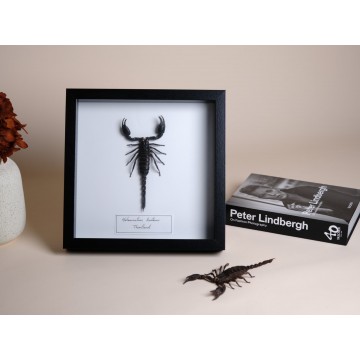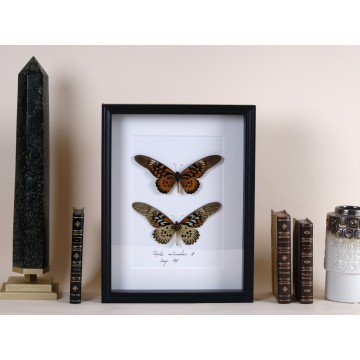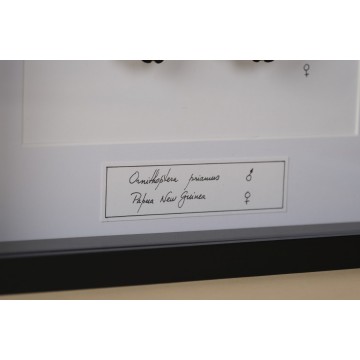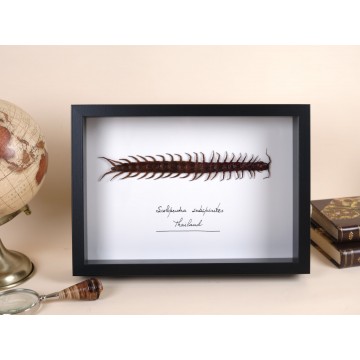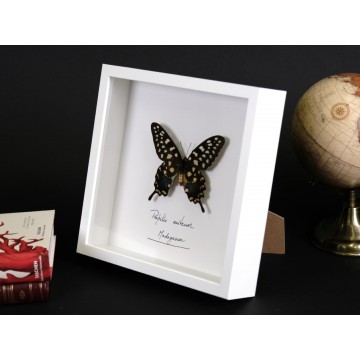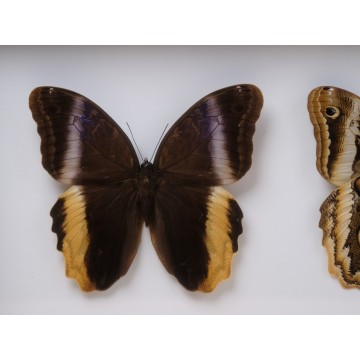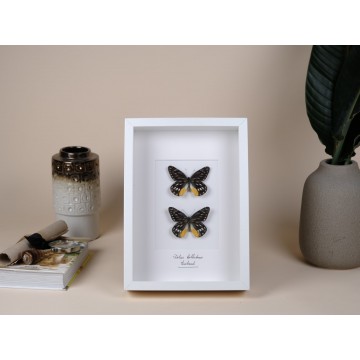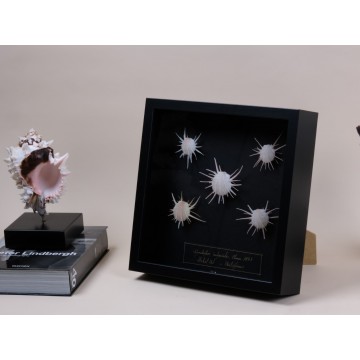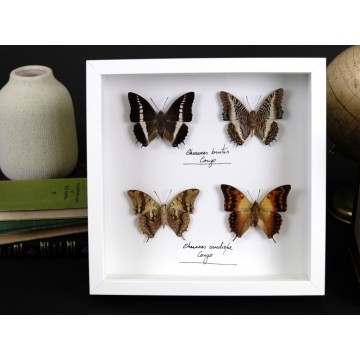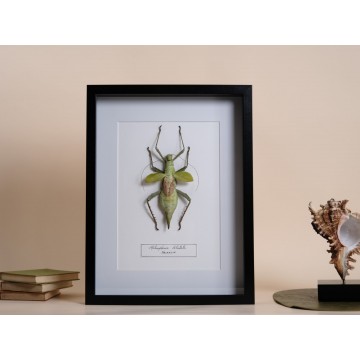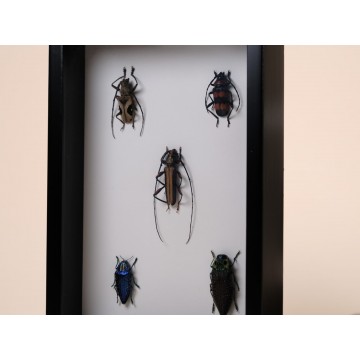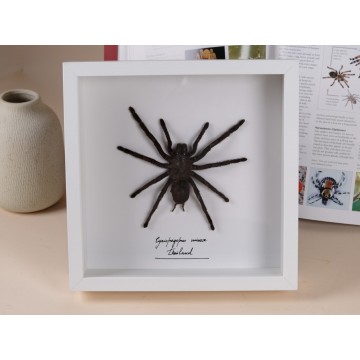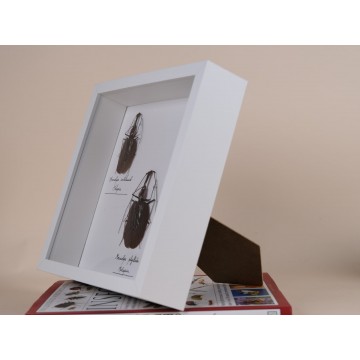Papilio antimachus in a black wood frame.
Two specimen, one each side, showing the interior and the back of their magnificent wings. The African giant swallowtail, is a butterfly in the family Papilionidae. With a wingspan between 18 and 23 centimetres, it is the largest butterfly in Africa and among the largest butterflies in the world.
The wings are long and narrow and the ground color is orange brown with black markings. Papilio antimachus live in the tropical rainforests of west and central Africa. The distribution area stretches from Angola, Cameroon, Democratic Republic of the Congo, Republic of the Congo, Gabon, Ghana, Ivory Coast, Liberia, Nigeria, Sierra Leone, and Uganda. The male is larger than the female and can be seen in groups at nectar. The females show themselves less, continually flying high above the tree tops.
The butterfly has no natural enemies because it is very toxic. This one came from Congo.

